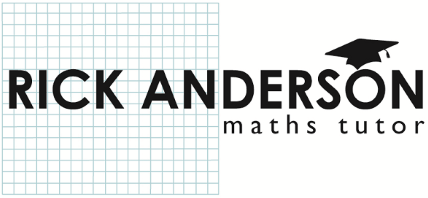 The ever popular Manfred Mann song,
The ever popular Manfred Mann song,
5-4-3-2-1 (a sixties hit and more recently part of a chocolate advert) surprisingly features references to the Charge of the Light Brigade (“onward rode the 600”) and Helen of Troy. Sung by Paul Jones, who joined the band after failing to complete his Oxford English degree, Paul was replaced by Mike d’Abo. Paul went on to have a varied solo career, currently still active as a music broadcaster and respected harmonica player, still playing the clubs. And looks hardly a day older even today!
The Mathemateer’s interest is not confined to the music, as the sequence “5-4-3-2-1” could one day feature – if not done already – as a GCSE question, set at around Grade 4 Level.
Namely, prove that the nth term of the sequence 5-4-3-2-1 is –n + 6. (See below for the methods to prove this.)
 Paul still plays in various bands, including the Manfreds and the Blues Band, and was interviewed on Breakfast TV with fellow original member Tom McGuiness (yes, that one). When a clip from “Do Wah Diddy Diddy” was played, Paul was asked whether he still did the famous knee-knocking dance style (think Mick Jagger, perhaps a precursor to Dad Dancing) and he replied “No, but I still play the maracas!”
Paul still plays in various bands, including the Manfreds and the Blues Band, and was interviewed on Breakfast TV with fellow original member Tom McGuiness (yes, that one). When a clip from “Do Wah Diddy Diddy” was played, Paul was asked whether he still did the famous knee-knocking dance style (think Mick Jagger, perhaps a precursor to Dad Dancing) and he replied “No, but I still play the maracas!”
There is a thriving club scene for bands – original and tributes – from the 60’s, 70’s and 80’s. For instance one of Paul’s other bands, the Blues Band, soon plays Blackheath Halls, which typically eatures comedians as well, such as Arthur Smith.
South West London features strongly in the history of rock’n’roll, and for instance the Half-Moon in Putney is still going strong, with Eddie and the Hotrods playing soon. The Boom Boom Club in Sutton is soon host to Curved Air, and tribute bands like Alter Eagles (love that name) and Absolute Bowie. The Clapham Grand will soon be featuring Like the Jam, with original member, that great bass player Bruce Foxton (As an aside, The Mathemateer went up to Somerset House recently to see the wonderful About the Young Idea retrospective of the Jam’s career. It reminded him that although the above websites are great, he misses the paper bill posters, showing for instance early Jam on the same bill as the Clash).
So, back to Maths questions: how on earth is 5,4,3,2,1 represented by “ – n + 6 ”?
This is intriguing because no less than three methods of solution are available in GCSE textbooks, summarised below. The first is the most often recommended, and the others are also of interest.
Method 1 The sequence reduces by 1 each time so there must be a “–n” in the answer. Then for n =1, what must be done to get to the first term of the actual sequence? To go from -1 to +5 you have to add 6.
So answer is that an expression for the nth term is –n + 6. Check for n= 2, the answer should be -2 + 6, which as expected equals 4.
Method 2 The formula for the nth term of a liner sequence like this is the nth term = dn + (a-d) where d is the difference in successive terms (-1) and a is the first term ( 5). So -1n + (5 –(-1)) implies the nth term is –n + 6, as before.
Method 3. Form two simultaneous equations for the first two terms using a for the n part and b for the number. Using the first and second terms,
For n = 1 a + b = 5
For n = 2 2a + b = 4
Solving these, a = -1 and b = 6., So the answer as before is that the nth term (known as Un) = -n + 6
Always double check the answer. For example, feed n= 5 (the 5th term) in. U (5) = -5 + 6 = 1
It’s a strange but true answer. “5-4-3-2-1” expressed as –n + 6 ! But correct!
And finally, Paul Jones sings “onward rode the 600”.
A supplementary foundation question might be: what is the 600th term? Answer of course is -600 + 6, namely -594.


